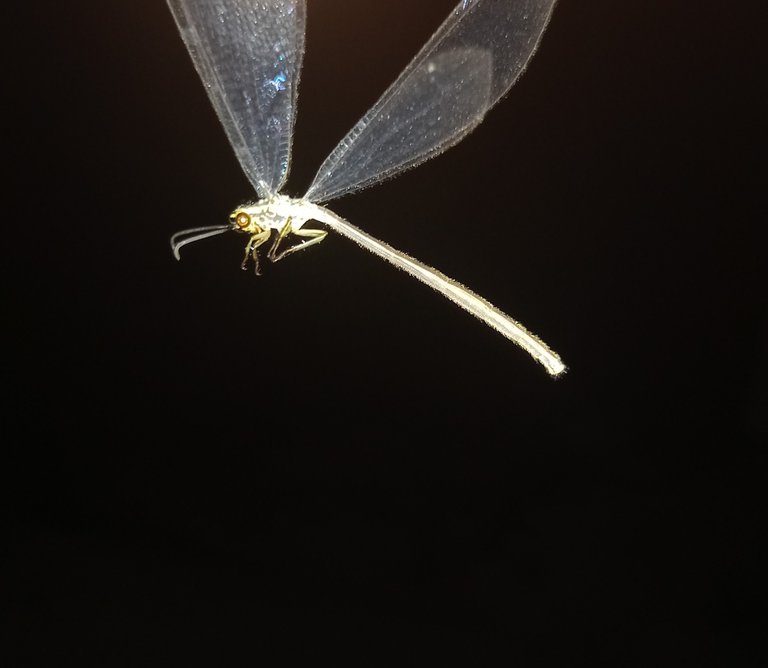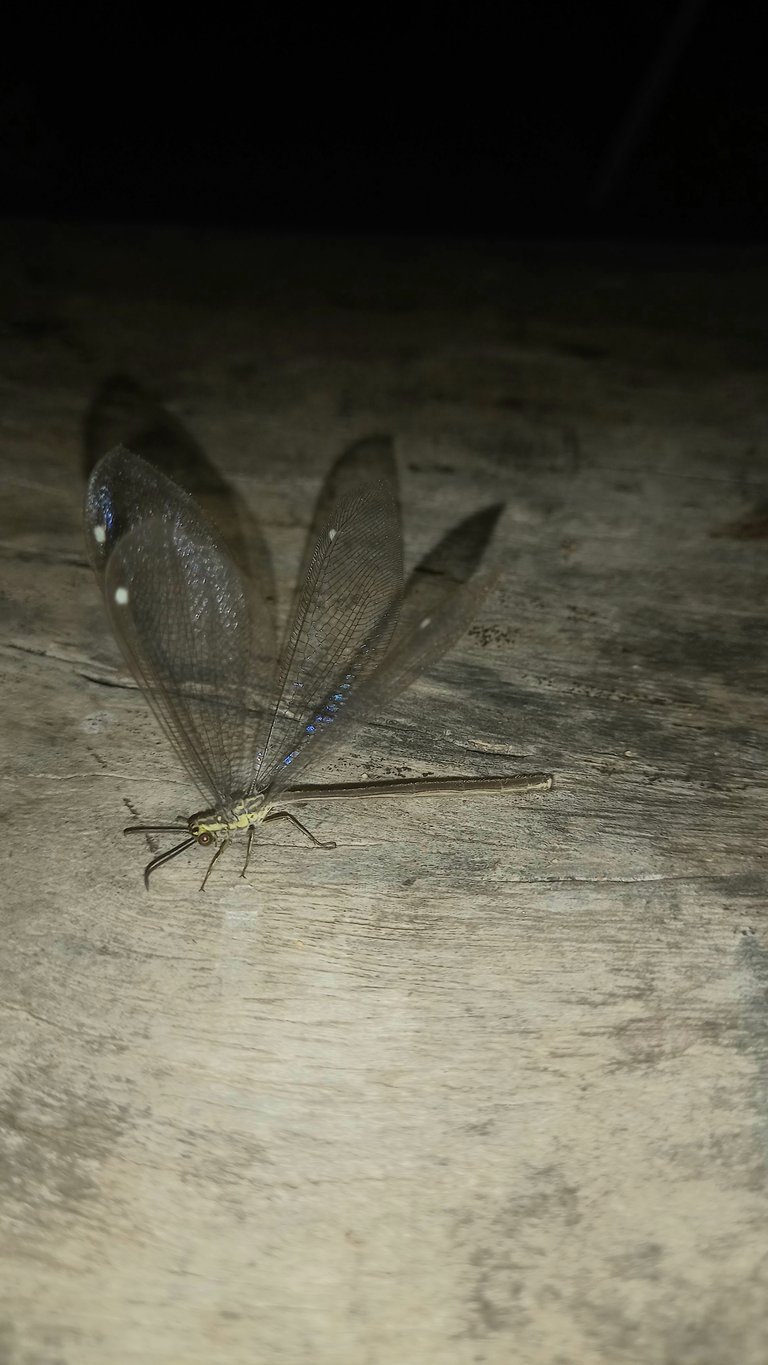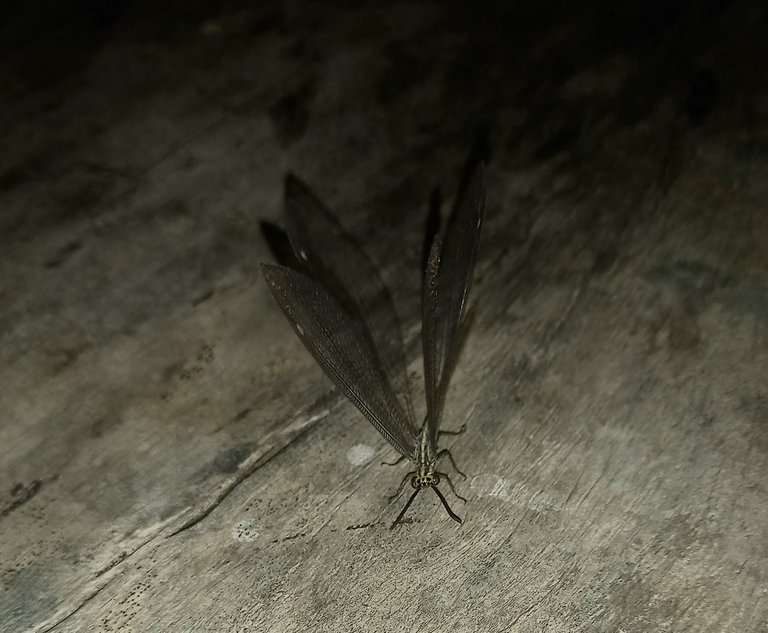Damselflies and Dragonflies Are Two Different Insects!!
I watched a short video just yesterday, about dragonflies, and damselflies, and my mind was blown with surprise...it dawned on me that I have been making a huge mistake.
First of all, I never knew there were damselflies lol( the name still sounds more like a name for cartoon characters to me lol). I always made the mistake of calling any insect with that long and tiny abdomen with long and transparent wings, dragonfly. But after watching the video, I got to understand that though these two Insects look identical, they aren't the same and in fact, There are many ways of differentiating one from the other. That same day, I was opportuned to see a damselfly physically


and with the knowledge acquired from the video, I was able to discern almost immediately.
So in this post I will be talking about dragonflies, damselflies, their similarities, their differences, and why people tend to mistake one for the other.
Ok let's go!!:
Dragonflies as well as damselflies come from the same order Odonata which is just one of one of the oldest bug orders, with a background going back to nearly 325 million years🤯🤯. These insects, are interesting ones understood for their striking shades, airborne balancings as well as aggressive actions. Now let's explore the specifics of these impressive insects, their species, resemblances, distinctions together with the reasons that individuals, like myself, occasionally mistake damselflies for dragonflies.
Dragonflies:

Dragonflies are legendary pests that are extensively acknowledged for their size, durable bodies as well as their powerful flight ( those things are really fast). They belong to the suborder Anisoptera and also are located around the globe other than in Antarctica. These pests have actually been identified right into around 3,000 varieties, making them among one of the most varied bug teams within the order Odonata. Dragonflies are typically connected with freshwater environments such as lakes, fish ponds, together with rivers where they invest a lot of their life as aquatic nymphs prior to changing right into winged adults.
Moving over to Damselflies:

Damselflies are likewise part of the order Odonata however from the suborder Zygoptera unlike dragonflies which belongs to the suborder, Anisoptera. They are typically smaller sized and also extra delicate-looking than dragonflies, they tend to have beautiful radiant colouration when fully grown too hence the reason for the name "damselfly". Damselflies are located in different environments consisting of fresh water bodies, marshes as well as near slow-moving streams. Like dragonflies, damselflies undertake incomplete metamorphosis, with nymphs staying in water and taking off when they become adults.
Similarities:
Dragonflies coupled with damselflies share a number of crucial features as a result of their usual origins as well as close transformative partnership. Both of these insects, have 2 sets of clear wings, big substance eyes plus lengthened lower abdomen. They are really good fliers as well as have outstanding vision which assists them in searching targets and escaping from whatever seems to be like a threat.
Distinctions/ Differences:
Although dragonflies as well as damselflies have several resemblances, some unique functions can assist in identifying which is which and I'm going to share it here so next time you see a damselfly, you won't mistake it for a dragonfly like i used to.
I) Physique:
Dragonflies have a tougher, and bulkier body while a much more slim + fragile body = damselflies.
II) Wing Position:
A very easy way to identify them when at rest, is their Wing's position. When at rest, dragonflies hold their wings flat,

while damselflies often tend to hold their wings up along their body.

III) Eye Placement:
Another huge difference, is their eye placement. Dragonflies' eyes usually touch on top of their head while damselflies' eyes are divided with an obvious space in between them.
IV) Wing Shape:
The back wings of dragonflies are more comprehensive at the base along with are various fit from the forewings. On the other hand damselflies' forewings as well as back wings are normally comparable fit.
V) Flight:
Dragonflies are recognized for their swift and also dexterous trip covering bigger ranges in a brief period, while damselflies have an even more fragile trip design, trembling around even more delicately...at least now you see reasons why they are called damselflies lol😅.
Hmm...with all these differences, why then do people find it difficult to differentiate them both, mistaking them to be the same?
Here are the reasons:
A) Their Size:
Some bigger damselflies are usually mistaken to be smaller sized dragonflies, because of their very similar body shape.
B) Lesser Awareness:
Damselflies, aren't really popular among people, probably because they are slightly smaller in size as well as much less noticeable, making people just assume they are young dragonflies.
Summary of this post?
Though damselflies are often mistaken to be dragonflies, they are different and very differentiable...so whenever you see that insect with long lower abdomen, don't be quick to call it a dragonfly look out for these:
a) Body Shape:
Observe the insect's body carefully. If it looks large and thick, it is most likely going to be a dragonfly. If on the other hand, it shows up slim and also fragile it is likely a damselfly.
b) Wing Position:
Observe minutest details such as how the wings are positioned when the insect rests on something. Straight wings pointing horizontally means it's a dragonfly while vertically placed wings shows it's a damselfly.
c) Eye Placement:
If the eyes are so big that they nearly loop at the top of the head,

it's most likely a dragonfly. If on the other hand, there is a nice amount of space separating both eyes,

it's most likely a damselfly.
d) Wing Shape:
If the back wings are more comprehensive at the base plus different from the forewings,

it's a dragonfly. If the wings are comparable fit it's a damselfly.
e) Behavior:
Observe the insect's trip pattern. Dragonflies often tends to change direction, or zip about rapidly, while damselflies have an even more fragile as well as fluttery trip design.
f) Habitat:
Consider the area where you've found the pest. Yes both insects love water, but Dragonflies are more frequently located around big bodies of water while damselflies could live around smaller sized extra stationary water resources.
g) Coloration:
With the above mentioned, making use of colouration isn't really effective or necessary, But Utilizing a guidebook or a specialized mobile phone application can be useful in recognizing certain varieties.
Photos used here are mine, except when i stated otherwise.

Thanks for reading and I do hope you learnt something new.
This is great embodiment of knowledge I just recalled my lessons on insect and habits.dragonflies are really wonderflies
Yep they are🙂
Thanks For Reading 🤝